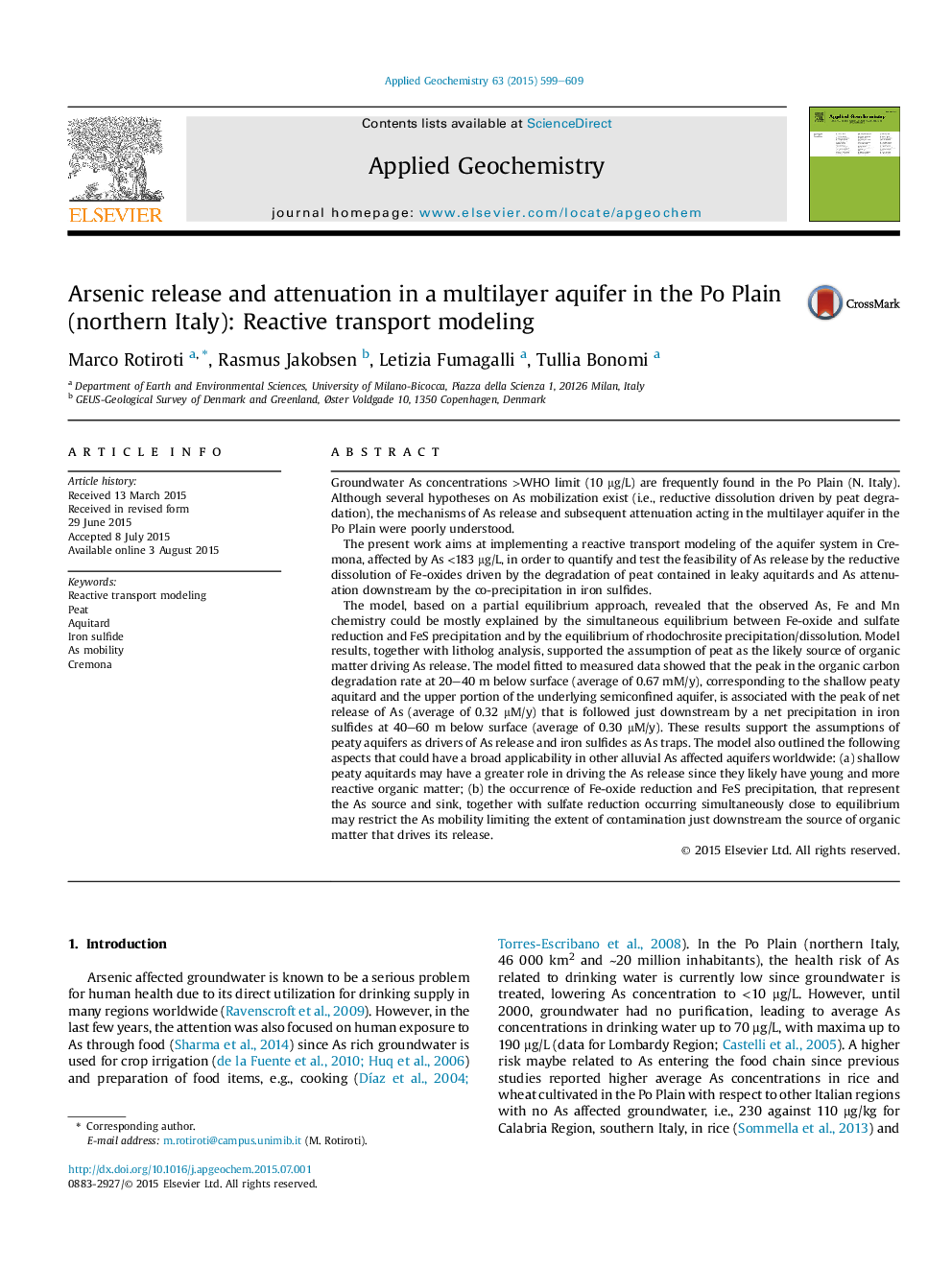| کد مقاله | کد نشریه | سال انتشار | مقاله انگلیسی | نسخه تمام متن |
|---|---|---|---|---|
| 6334897 | 1620228 | 2015 | 11 صفحه PDF | دانلود رایگان |
- A 1D reactive transport modeling for natural As release and attenuation is presented.
- As is likely released by reductive dissolution and then trapped by FeS precipitation.
- Peaty aquitards are the likely sources of organic matter driving As release.
- Fe-oxide & sulfate reduction and FeS precipitation approach a concomitant equilibrium.
- This concomitant equilibrium may restrict the As mobility in groundwater.
Groundwater As concentrations >WHO limit (10 μg/L) are frequently found in the Po Plain (N. Italy). Although several hypotheses on As mobilization exist (i.e., reductive dissolution driven by peat degradation), the mechanisms of As release and subsequent attenuation acting in the multilayer aquifer in the Po Plain were poorly understood.The present work aims at implementing a reactive transport modeling of the aquifer system in Cremona, affected by As <183 μg/L, in order to quantify and test the feasibility of As release by the reductive dissolution of Fe-oxides driven by the degradation of peat contained in leaky aquitards and As attenuation downstream by the co-precipitation in iron sulfides.The model, based on a partial equilibrium approach, revealed that the observed As, Fe and Mn chemistry could be mostly explained by the simultaneous equilibrium between Fe-oxide and sulfate reduction and FeS precipitation and by the equilibrium of rhodochrosite precipitation/dissolution. Model results, together with litholog analysis, supported the assumption of peat as the likely source of organic matter driving As release. The model fitted to measured data showed that the peak in the organic carbon degradation rate at 20-40 m below surface (average of 0.67 mM/y), corresponding to the shallow peaty aquitard and the upper portion of the underlying semiconfined aquifer, is associated with the peak of net release of As (average of 0.32 μM/y) that is followed just downstream by a net precipitation in iron sulfides at 40-60 m below surface (average of 0.30 μM/y). These results support the assumptions of peaty aquifers as drivers of As release and iron sulfides as As traps. The model also outlined the following aspects that could have a broad applicability in other alluvial As affected aquifers worldwide: (a) shallow peaty aquitards may have a greater role in driving the As release since they likely have young and more reactive organic matter; (b) the occurrence of Fe-oxide reduction and FeS precipitation, that represent the As source and sink, together with sulfate reduction occurring simultaneously close to equilibrium may restrict the As mobility limiting the extent of contamination just downstream the source of organic matter that drives its release.
Journal: Applied Geochemistry - Volume 63, December 2015, Pages 599-609
